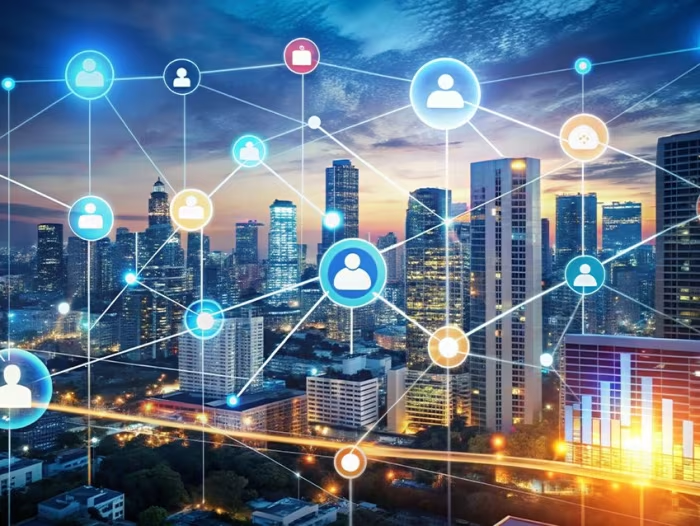Resource / Online Journal
How MDR and IAG Work Together to Strengthen Cyber Resilience
Read now to know more about how MDR and IAG can work together to make a stronger cybersecurity posture for your organization.
Published on Jul 22, 2025

What is Integrated Access Governance (IAG)?
Integrated Access Governance is a strategic cybersecurity framework that combines identity governance, access control, and continuous monitoring. It ensures secure and compliant access across an organization’s IT environment.
By integrating with real-time monitoring systems and security operations, IAG helps prevent unauthorized access. It enforces regulatory compliance (such as GDPR and HIPAA) and reduces identity-based risks.
Threat intelligence and proactive threat hunting, when together, make IAG a crucial component in a defense-in-depth strategy. Security Operations Center (SOC) teams often work closely with Managed Detection and Response (MDR) providers to operationalize these controls and respond swiftly to any security incidents.
What is Managed Detection and Response (MDR)?
Managed Detection and Response (MDR) provides organizations with expert-driven monitoring, advanced threat detection, and incident response capabilities. Thus, making it different from traditional security tools.
MDR services actively hunt for threats using behavioral analytics, threat intelligence, and machine learning. It supports IAG by detecting misuse of credentials, insider threats, or lateral movement across systems, often resulting from compromised access controls.
Integration of both enables faster containment and remediation of identity-based threats. MDR teams bring threat hunting expertise and a deep understanding of evolving attacker tactics. Thus, making them an essential partner in access governance programs.
Role of Security Operations and IAG
Security operations play a pivotal role in protecting digital environments through real-time monitoring, detection, and response. These teams utilize tools such as Endpoint Detection and Response (EDR) and Security Information and Event Management (SIEM).
IAG complements these efforts by integrating identity lifecycle management, role-based access control, and policy enforcement directly into security workflows. This synergy ensures that access-related risks are not treated in isolation but as part of the broader threat landscape.
Managed Security Service Providers (MSSPs) often facilitate this integration, offering 24/7 monitoring while reducing operational overhead. It ultimately leads to a better security incident response.
Advanced Threat Detection with IAG
Modern cyberattacks often bypass perimeter defenses by targeting users, credentials, and misconfigured access rights. Advanced threat detection requires technologies like Extended Detection and Response (XDR), artificial intelligence, and machine learning.
All this helps to analyze vast amounts of telemetry data across endpoints, users, and cloud platforms. MDR and IA enhance this by providing the context of who accessed what, when, and why. Thus, allowing correlation of user behavior with potential threats.
For instance, anomalous access to sensitive files outside of business hours can trigger an automated response or investigation. This synergy between access governance and threat analytics significantly reduces the mean time to detect (MTTD) and respond (MTTR) to threats.
Selection of MDR and IAG
Choosing the right MDR provider is vital to strengthening IAG effectiveness. Organizations should evaluate MDR solutions based on their ability to integrate with identity management systems, detect credential-based attacks, and offer rapid incident response.
Similarly, selecting an IAG platform that aligns with the organization’s regulatory obligations and IT architecture is critical. The ideal pairing ensures seamless visibility across the entire identity lifecycle and enhances the organization's ability to detect and respond to access-related threats in real-time.
Evaluation criteria should include regulatory support (e.g., SOX, HIPAA), scalability, analytics capability, and integration with SIEM, EDR, and IAM tools. TechDemocracy is one of the managed security service providers who not only focus on the solution but also proactive threat hunting.
Managing Alert Fatigue
One of the major operational challenges in cybersecurity is alert fatigue, where the volume of security alerts overwhelms analysts, causing missed or delayed responses to real threats. Poorly tuned detection systems can drown teams in low-priority notifications.
IAG contributes to reducing this fatigue by enforcing precise access controls and reducing the attack surface. On the other hand, MDR solutions apply behavioral analytics and risk scoring to prioritize alerts.
This combination ensures that alerts generated are more accurate and actionable. By streamlining event correlation and automating low-risk alerts, SOC teams can focus on high-impact incidents.
Improving Response Capabilities
Incident response is a core element of cyber resilience. It forms the ability to withstand and recover from cyberattacks. To be effective, security teams must have clear response plans, defined roles, and repeatable processes.
It helps the team to deal with incidents involving access violations, malware, or insider threats. MDR providers offer ready-to-deploy response playbooks and real-time containment actions (e.g., isolating devices, revoking access).
IAG platforms support it by enabling rapid de-provisioning of user accounts or role changes. Together, they enable organizations to limit damage, restore operations quickly, and learn from incidents to strengthen future defenses.
Integrating with Existing Security Infrastructure
Integration is key for maximizing return on cybersecurity investments. IAG and MDR solutions must work with existing technologies to keep the cybersecurity seamless.
It should be integrated with solutions like Identity and Access Management (IAM), EDR, SIEM, and firewalls to provide comprehensive visibility and unified control. For example, integrating IAG with IAM systems ensures that access policies align with business roles and that access reviews are continuously updated.
MDR solutions enrich this ecosystem by monitoring how those access rights are being used in real time and detecting anomalies. A cohesive integration reduces silos, enhances automation, and supports a Zero Trust architecture.
Staying Ahead of Threats
To stay ahead in a constantly evolving threat landscape, organizations must move from reactive defense to proactive cyber resilience. This includes regular threat hunting, continuous policy reviews, and staying informed on attacker tactics, techniques, and procedures (TTPs).
MDR services provide dedicated threat intelligence and rapid incident response, while IAG ensures that access paths are hardened and policy violations are addressed before they become breaches. By continuously refining detection capabilities and access governance controls, organizations build long-term resilience against even the most sophisticated attacks.
Conclusion
Combining Managed Detection and Response (MDR) with Integrated Access Governance (IAG) creates a unified, proactive defense against modern cyber threats. Together, they enable organizations to strengthen cyber resilience through intelligent access control, advanced threat detection, and coordinated response strategies.
By selecting the right MDR services, optimizing alert management, and integrating IAG with existing systems, organizations can not only prevent breaches but also build a more secure and compliant digital environment. You can easily do everything from integration to proactive threat detection with TechDemocracy.
Recommended articles


Benefits of Identity Governance and Administration (IGA)
Take Your Identity Strategy
to the Next Level
Strengthen your organization's digital identity for a secure and worry-free tomorrow. Kickstart the journey with a complimentary consultation to explore personalized solutions.